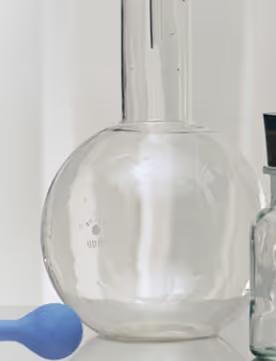Hands and feet play crucial roles in everyday activities, so when a health condition affects the nails it can significantly disrupt daily routines. From pitting and ridges to discoloration and crumbling, nail psoriasis can manifest in various ways, affecting not only the health of your nails but also your self-confidence.
Nail psoriasis is less talked about than other types of autoimmune conditions, but it's estimated that 80% to 90% of people living with psoriasis will experience nail psoriasis at some point in their lives. (Source)
Understanding the causes and triggers of nail psoriasis can help you manage symptoms effectively so you feel better faster. In this article, we will explore the common triggers of nail psoriasis, available treatment options, and discuss natural remedies that may offer relief.
What Is Nail Psoriasis?
Nail psoriasis is an autoimmune condition associated with psoriasis, a skin disorder characterized by patchy, scaly lesions. It occurs due to excessive cell production in the nails, resulting in changes such as thickening, discoloration, or other nail irregularities. (Source)
Having psoriasis is a significant risk factor for developing nail psoriasis. Around 50% of people diagnosed with psoriasis are affected by nail psoriasis at any given time. People with psoriatic arthritis, a type of psoriasis that affects the joints, are also much more likely to be affected by nail psoriasis. Family history and increasing age are additional risk factors.
Nail psoriasis can often disrupt daily activities and lead to feelings of embarrassment or self-consciousness due to the appearance of nails, leading to a higher prevalence of anxiety and depression. (Source)
What Are the Symptoms of Nail Psoriasis?
Nail psoriasis symptoms range in severity and include:
- nail thickening
- nail pitting that looks like small pinpoint depressions or dents
- color changes under the nail, including turning yellow, red, or pink
- thin or crumbling nails
- deep horizontal indentations across the nail (called Beau lines)
- nail separates from the skin (onycholysis)
- splinter hemorrhages that look like thin red or brown lines running along the nail
- build-up of skin cells under the nail plate (called subungual hyperkeratosis)
(Source)

What Causes Nail Psoriasis?
The exact cause of psoriasis remains unknown, but it’s believed to be caused by a combination of genetic, environmental, and immune system factors. (Source)
As mentioned above, nail psoriasis is an autoimmune condition. Research suggests that an upregulated inflammatory response is at least partly a cause of psoriasis and nail psoriasis. (Source)
Since most people with nail psoriasis also have psoriasis, triggers include many of the factors associated with autoimmunity, including:
- physical or psychological stress
- lack of sleep
- hormone changes
- injury or trauma to the nail
- environmental toxins
- viral or bacterial infections
How Is Nail Psoriasis Diagnosed?
Nail psoriasis is usually diagnosed by a dermatologist after a physical examination. If you already live with psoriasis, your health care provider might be able to diagnose nail psoriasis just by looking at your nails, along with other presenting symptoms such as joint pain or skin lesions. Your health care provider will also rule out anything else that could cause nail changes, such as fungal infection, nutrient deficiencies, or other inflammatory conditions. Nail psoriasis is sometimes confused with nail fungus, but the two are very different, and nail psoriasis is not contagious.
Sometimes, nail biopsies may be used to gather information that can help with challenging diagnoses. However, these biopsies are not commonly performed as they are invasive and can cause bleeding, pain, more nail problems, and an increased risk of infection.
Several types of scales are used to determine the severity of nail psoriasis. For example, one of the most commonly used in research is the nail psoriasis severity index (NAPSI). NAPSI uses a numerical scale from 0 to 80 to assess the severity of nail psoriasis, where a higher score means greater severity. (Source, Source)

.avif)
%20(1).avif)
%20(1).avif)

.avif)



.avif)








.avif)

%2520(1).avif)



